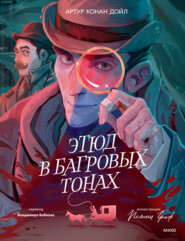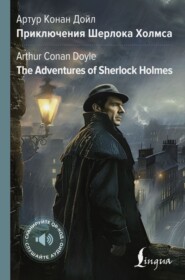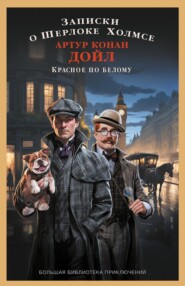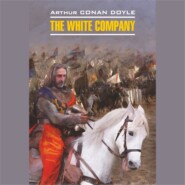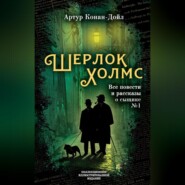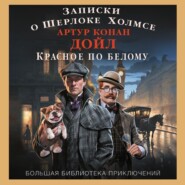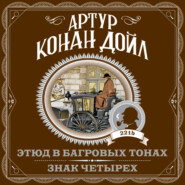По всем вопросам обращайтесь на: info@litportal.ru
(©) 2003-2025.
✖
The Great Boer War
Настройки чтения
Размер шрифта
Высота строк
Поля
Though repulsed at Moedwill, De la Rey, the grim, long-bearded fighting man, was by no means discouraged. From the earliest days of the campaign, when he first faced Methuen upon the road to Kimberley, he had shown that he was a most dangerous antagonist, tenacious, ingenious, and indomitable. With him were a body of irreconcilable burghers, who were the veterans of many engagements, and in Kemp he had an excellent fighting subordinate. His command extended over a wide stretch of populous country, and at any time he could bring considerable reinforcements to his aid, who would separate again to their farms and hiding-places when their venture was accomplished. For some weeks after the fight at Moedwill the Boer forces remained quiet in that district. Two British columns had left Zeerust on October 17th, under Methuen and Von Donop, in order to sweep the surrounding country, the one working in the direction of Elands River and the other in that of Rustenburg. They returned to Zeerust twelve days later, after a successful foray, which had been attended with much sniping and skirmishing, but only one action which is worthy of record.
This was fought on October 24th at a spot near Kleinfontein, upon the Great Marico River, which runs to the north-east of Zeerust. Von Donop's column was straggling through very broken and bush-covered country when it was furiously charged in the flank and rear by two separate bodies of burghers. Kemp, who commanded the flank attack, cut into the line of wagons and destroyed eight of them, killing many of the Kaffir drivers, before he could be driven off. De la Rey and Steenkamp, who rushed the rear-guard, had a more desperate contest. The Boer horsemen got among the two guns of the 4th R.F.A., and held temporary possession of them, but the small escort were veterans of the 'Fighting Fifth,' who lived up to the traditions of their famous north-country regiment. Of the gun crews of the section, amounting to about twenty-six men, the young officer, Hill, and sixteen men were hit. Of the escort of Northumberland Fusiliers hardly a man was left standing, and forty-one of the supporting Yeomanry were killed and wounded. It was for some little time a fierce and concentrated struggle at the shortest of ranges. The British horsemen came galloping to the rescue, however, and the attack was finally driven back into that broken country from which it had come. Forty dead Boers upon the ground, with their brave chieftain, Ouisterhuisen, amongst them, showed how manfully the attack had been driven home. The British losses were twenty-eight killed and fifty-six wounded. Somewhat mauled, and with eight missing wagons, the small column made its way back to Zeerust.
From this incident until the end of the year nothing of importance occurred in this part of the seat of war, save for a sharp and well-managed action at Beestekraal upon October 29th, in which seventy-nine Boers were surrounded and captured by Kekewich's horsemen. The process of attrition went very steadily forwards, and each of the British columns returned its constant tale of prisoners. The blockhouse system had now been extended to such an extent that the Magaliesberg was securely held, and a line had been pushed through from Klerksdorp and Fredericstad to Ventersdorp. One of Colonel Hickie's Yeomanry patrols was roughly handled near Brakspruit upon November 13th, but with this exception the points scored were all upon one side. Methuen and Kekewich came across early in November from Zeerust to Klerksdorp, and operated from the railway line. The end of the year saw them both in the Wolmaranstad district, where they were gathering up prisoners and clearing the country.
Of the events in the other parts of the Transvaal, during the last three months of the year 1901, there is not much to be said. In all parts the lines of blockhouses and of constabulary posts were neutralising the Boer mobility, and bringing them more and more within reach of the British. The only fighting forces left in the Transvaal were those under Botha in the south-east and those under De la Rey in the west. The others attempted nothing save to escape from their pursuers, and when overtaken they usually gave in without serious opposition. Among the larger hauls may be mentioned that of Dawkins in the Nylstrom district (seventy-six prisoners), Kekewich (seventy-eight), Colenbrander in the north (fifty-seven), Dawkins and Colenbrander (104), Colenbrander (sixty-two); but the great majority of the captures were in smaller bodies, gleaned from the caves, the kloofs, and the farmhouses.
Only two small actions during these months appear to call for any separate notice. The first was an attack made by Buys' commando, upon November 20th, on the Railway Pioneers when at work near Villiersdorp, in the extreme north-east of the Orange River Colony. This corps, consisting mainly of miners from Johannesburg, had done invaluable service during the war. On this occasion a working party of them was suddenly attacked, and most of them taken prisoners. Major Fisher, who commanded the pioneers, was killed, and three other officers with several men were wounded. Colonel Rimington's column appeared upon the scene, however, and drove off the Boers, who left their leader, Buys, a wounded prisoner in our hands.
The second action was a sharp attack delivered by Muller's Boers upon Colonel Park's column on the night of December 19th, at Elandspruit. The fight was sharp while it lasted, but it ended in the repulse of the assailants. The British casualties were six killed and twenty-four wounded. The Boers, who left eight dead behind them, suffered probably to about the same extent.
Already the most striking and pleasing feature in the Transvaal was the tranquillity of its central provinces, and the way in which the population was settling down to its old avocations. Pretoria had resumed its normal quiet life, while its larger and more energetic neighbour was rapidly recovering from its two years of paralysis. Every week more stamps were dropped in the mines, and from month to month a steady increase in the output showed that the great staple industry of the place would soon be as vigorous as ever. Most pleasing of all was the restoration of safety upon the railway lines, which, save for some precautions at night, had resumed their normal traffic. When the observer took his eyes from the dark clouds which shadowed every horizon, he could not but rejoice at the ever-widening central stretch of peaceful blue which told that the storm was nearing its end.
Having now dealt with the campaign in the Transvaal down to the end of 1901, it only remains to bring the chronicle of the events in the Orange River Colony down to the same date. Reference has already been made to two small British reverses which occurred in September, the loss of two guns to the south of the Waterworks near Bloemfontein, and the surprise of the camp of Lord Lovat's Scouts. There were some indications at this time that a movement had been planned through the passes of the Drakensberg by a small Free State force which should aid Louis Botha's invasion of Natal. The main movement was checked, however, and the demonstration in aid of it came to nothing.
The blockhouse system had been developed to a very complete extent in the Orange River Colony, and the small bands of Boers found it increasingly difficult to escape from the British columns who were for ever at their heels. The southern portion of the country had been cut off from the northern by a line which extended through Bloemfontein on the east to the Basuto frontier, and on the west to Jacobsdal. To the south of this line the Boer resistance had practically ceased, although several columns moved continually through it, and gleaned up the broken fragments of the commandos. The north-west had also settled down to a large extent, and during the last three months of 1901 no action of importance occurred in that region. Even in the turbulent north-east, which had always been the centre of resistance, there was little opposition to the British columns, which continued every week to send in their tale of prisoners. Of the column commanders, Williams, Damant, Du Moulin, Lowry Cole, and Wilson were the most successful. In their operations they were much aided by the South African Constabulary. One young officer of this force, Major Pack-Beresford, especially distinguished himself by his gallantry and ability. His premature death from enteric was a grave loss to the British army. Save for one skirmish of Colonel Wilson's early in October, and another of Byng's on November 14th, there can hardly be said to have been any actual fighting until the events late in December which I am about to describe.
In the meanwhile the peaceful organisation of the country was being pushed forward as rapidly as in the Transvaal, although here the problems presented were of a different order, and the population an exclusively Dutch one. The schools already showed a higher attendance than in the days before the war, while a continual stream of burghers presented themselves to take the oath of allegiance, and even to join the ranks against their own irreconcilable countrymen, whom they looked upon with justice as the real authors of their troubles.
Towards the end of November there were signs that the word had gone forth for a fresh concentration of the fighting Boers in their old haunts in the Heilbron district, and early in December it was known that the indefatigable De Wet was again in the field. He had remained quiet so long that there had been persistent rumours of his injury and even of his death, but he was soon to show that he was as alive as ever. President Steyn was ill of a most serious complaint, caused possibly by the mental and physical sufferings which he had undergone; but with an indomitable resolution which makes one forget and forgive the fatuous policy which brought him and his State to such a pass, he still appeared in his Cape cart at the laager of the faithful remnant of his commandos. To those who remembered how widespread was our conviction of the half-heartedness of the Free Staters at the outbreak of the war, it was indeed a revelation to see them after two years still making a stand against the forces which had crushed them.
It had been long evident that the present British tactics of scouring the country and capturing the isolated burghers must in time bring the war to a conclusion. From the Boer point of view the only hope, or at least the only glory, lay in reassembling once more in larger bodies and trying conclusions with some of the British columns. It was with this purpose that De Wet early in December assembled Wessels, Manie Botha, and others of his lieutenants, together with a force of about two thousand men, in the Heilbron district. Small as this force was, it was admirably mobile, and every man in it was a veteran, toughened and seasoned by two years of constant fighting. De Wet's first operations were directed against an isolated column of Colonel Wilson's, which was surrounded within twenty miles of Heilbron. Rimington, in response to a heliographic call for assistance, hurried with admirable promptitude to the scene of action, and joined hands with Wilson. De Wet's men were as numerous, however, as the two columns combined, and they harassed the return march into Heilbron. A determined attack was made on the convoy and on the rearguard, but it was beaten off. That night Rimington's camp was fired into by a large body of Boers, but he had cleverly moved his men away from the fires, so that no harm was done. The losses in these operations were small, but with troops which had not been trained in this method of fighting the situation would have been a serious one. For a fortnight or more after this the burghers contented themselves by skirmishing with British columns and avoiding a drive which Elliot's forces made against them. On December 18th they took the offensive, however, and within a week fought three actions, two of which ended in their favour.
News had come to British headquarters that Kaffir's Kop, to the north-west of Bethlehem, was a centre of Boer activity. Three columns were therefore turned in that direction, Elliot's, Barker's, and Dartnell's. Some desultory skirmishing ensued, which was only remarkable for the death of Haasbroek, a well-known Boer leader. As the columns separated again, unable to find an objective, De Wet suddenly showed one of them that their failure was not due to his absence. Dartnell had retraced his steps nearly as far as Eland's River Bridge, when the Boer leader sprang out of his lair in the Langberg and threw himself upon him. The burghers attempted to ride in, as they had successfully done at Brakenlaagte, but they were opposed by the steady old troopers of the two regiments of Imperial Horse, and by a General who was familiar with every Boer ruse. The horsemen never got nearer than 150 yards to the British line, and were beaten back by the steady fire which met them. Finding that he made no headway, and learning that Campbell's column was coming up from Bethlehem, De Wet withdrew his men after four hours' fighting. Fifteen were hit upon the British side, and the Boer loss seems to have been certainly as great or greater.
De Wet's general aim in his operations seems to have been to check the British blockhouse building. With his main force in the Langberg he could threaten the line which was now being erected between Bethlehem and Harrismith, a line against which his main commando was destined, only two months later, to beat itself in vain. Sixty miles to the north a second line was being run across country from Frankfort to Standerton, and had reached a place called Tafelkop. A covering party of East Lancashires and Yeomanry watched over the workers, but De Wet had left a portion of his force in that neighbourhood, and they harassed the blockhouse builders to such an extent that General Hamilton, who was in command, found it necessary to send in to Frankfort for support. The British columns there had just returned exhausted from a drive, but three bodies under Damant, Rimington, and Wilson were at once despatched to clear away the enemy.
The weather was so atrocious that the veld resembled an inland sea, with the kopjes as islands rising out of it. By this stage of the war the troops were hardened to all weathers, and they pushed swiftly on to the scene of action. As they approached the spot where the Boers had been reported, the line had been extended over many miles, with the result that it had become very attenuated and dangerously weak in the centre. At this point Colonel Damant and his small staff were alone with the two guns and the maxim, save for a handful of Imperial Yeomanry (91st), who acted as escort to the guns. Across the face of this small force there rode a body of men in khaki uniforms, keeping British formation, and actually firing bogus volleys from time to time in the direction of some distant Boers. Damant and his staff seem to have taken it for granted that these were Rimington's men, and the clever ruse succeeded to perfection. Nearer and nearer came the strangers, and suddenly throwing off all disguise, they made a dash for the guns. Four rounds of case failed to stop them, and in a few minutes they were over the kopje on which the guns stood and had ridden among the gunners, supported in their attack by a flank fire from a number of dismounted riflemen.
The instant that the danger was realised Damant, his staff, and the forty Yeomen who formed the escort dashed for the crest in the hope of anticipating the Boers. So rapid was the charge of the others that they had overwhelmed the gunners before the supports could reach the hill, and the latter found themselves under the deadly fire of the Boer rifles from above. Damant was hit in four places, all of his staff were wounded, and hardly a man of the small body of Yeomanry was left standing. Nothing could exceed their gallantry. Gaussen their captain fell at their head. On the ridge the men about the guns were nearly all killed or wounded. Of the gun detachment only two men remained, both of them hit, and Jeffcoat their dying captain bequeathed them fifty pounds each in a will drawn upon the spot. In half an hour the centre of the British line had been absolutely annihilated. Modern warfare is on the whole much less bloody than of old, but when one party has gained the tactical mastery it is a choice between speedy surrender and total destruction.
The wide-spread British wings had begun to understand that there was something amiss, and to ride in towards the centre. An officer on the far right peering through his glasses saw those tell-tale puffs at the very muzzles of the British guns, which showed that they were firing case at close quarters. He turned his squadron inwards and soon gathered up Scott's squadron of Damant's Horse, and both rode for the kopje. Rimington's men were appearing on the other side, and the Boers rode off. They were unable to remove the guns which they had taken, because all the horses had perished. 'I actually thought,' says one officer who saw them ride away, 'that I had made a mistake and been fighting our own men. They were dressed in our uniforms and some of them wore the tiger-skin, the badge of Damant's Horse, round their hats.' The same officer gives an account of the scene on the gun-kopje. 'The result when we got to the guns was this, gunners all killed except two (both wounded), pom-pom officers and men all killed, maxim all killed, 91st (the gun escort) one officer and one man not hit, all the rest killed or wounded; staff, every officer hit.' That is what it means to those who are caught in the vortex of the cyclone. The total loss was about seventy-five.
In this action the Boers, who were under the command of Wessels, delivered their attack with a cleverness and dash which deserved success. Their stratagem, however, depending as it did upon the use of British uniforms and methods, was illegitimate by all the laws of war, and one can but marvel at the long-suffering patience of officers and men who endured such things without any attempt at retaliation. There is too much reason to believe also, that considerable brutality was shown by those Boers who carried the kopje, and the very high proportion of killed to wounded among the British who lay there corroborates the statement of the survivors that several were shot at close quarters after all resistance had ceased.
This rough encounter of Tafelkop was followed only four days later by a very much more serious one at Tweefontein, which proved that even after two years of experience we had not yet sufficiently understood the courage and the cunning of our antagonist. The blockhouse line was being gradually extended from Harrismith to Bethlehem, so as to hold down this turbulent portion of the country. The Harrismith section had been pushed as far as Tweefontein, which is nine miles west of Elands River Bridge, and here a small force was stationed to cover the workers. This column consisted of four squadrons of the 4th Imperial Yeomanry, one gun of the 79th battery, and one pom-pom, the whole under the temporary command of Major Williams of the South Staffords, Colonel Firmin being absent.
Knowing that De Wet and his men were in the neighbourhood, the camp of the Yeomen had been pitched in a position which seemed to secure it against attack. A solitary kopje presented a long slope to the north, while the southern end was precipitous. The outposts were pushed well out upon the plain, and a line of sentries was placed along the crest. The only precaution which seems to have been neglected was to have other outposts at the base of the southern declivity. It appears to have been taken for granted, however, that no attack was to be apprehended from that side, and that in any case it would be impossible to evade the vigilance of the sentries upon the top.
Of all the daring and skilful attacks delivered by the Boers during the war there is certainly none more remarkable than this one. At two o'clock in the morning of a moonlight night De Wet's forlorn hope assembled at the base of the hill and clambered up to the summit. The fact that it was Christmas Eve may conceivably have had something to do with the want of vigilance upon the part of the sentries. In a season of good will and conviviality the rigour of military discipline may insensibly relax. Little did the sleeping Yeomen in the tents, or the drowsy outposts upon the crest, think of the terrible Christmas visitors who were creeping on to them, or of the grim morning gift which Santa Claus was bearing.
The Boers, stealing up in their stockinged feet, poured under the crest until they were numerous enough to make a rush. It is almost inconceivable how they could have got so far without their presence being suspected by the sentries – but so it was. At last, feeling strong enough to advance, they sprang over the crest and fired into the pickets, and past them into the sleeping camp. The top of the hill being once gained, there was nothing to prevent their comrades from swarming up, and in a very few minutes nearly a thousand Boers were in a position to command the camp. The British were not only completely outnumbered, but were hurried from their sleep into the fight without any clear idea as to the danger or how to meet it, while the hissing sleet of bullets struck many of them down as they rushed out of their tents. Considering how terrible the ordeal was to which they were exposed, these untried Yeomen seem to have behaved very well. 'Some brave gentlemen ran away at the first shot, but I am thankful to say they were not many,' says one of their number. The most veteran troops would have been tried very high had they been placed in such a position. 'The noise and the clamour,' says one spectator, 'were awful. The yells of the Dutch, the screams and shrieks of dying men and horses, the cries of natives, howls of dogs, the firing, the galloping of horses, the whistling of bullets, and the whirr volleys make in the air, made up such a compound of awful and diabolical sounds as I never heard before nor hope to hear again. In the confusion some of the men killed each other and some killed themselves. Two Boers who put on helmets were killed by their own people. The men were given no time to rally or to collect their thoughts, for the gallant Boers barged right into them, shooting them down, and occasionally being shot down, at a range of a few yards. Harwich and Watney, who had charge of the maxim, died nobly with all the men of their gun section round them. Reed, the sergeant-major, rushed at the enemy with his clubbed rifle, but was riddled with bullets. Major Williams, the commander, was shot through the stomach as he rallied his men. The gunners had time to fire two rounds before they were overpowered and shot down to a man. For half an hour the resistance was maintained, but at the end of that time the Boers had the whole camp in their possession, and were already hastening to get their prisoners away before the morning should bring a rescue.
The casualties are in themselves enough to show how creditable was the resistance of the Yeomanry. Out of a force of under four hundred men they had six officers and fifty-one men killed, eight officers and eighty men wounded. There have been very few surrenders during the war in which there has been such evidence as this of a determined stand. Nor was it a bloodless victory upon the part of the Boers, for there was evidence that their losses, though less than those of the British, were still severe.
The prisoners, over two hundred in number, were hurried away by the Boers, who seemed under the immediate eye of De Wet to have behaved with exemplary humanity to the wounded. The captives were taken by forced marches to the Basuto border, where they were turned adrift, half clad and without food. By devious ways and after many adventures, they all made their way back again to the British lines. It was well for De Wet that he had shown such promptness in getting away, for within three hours of the end of the action the two regiments of Imperial Horse appeared upon the scene, having travelled seventeen miles in the time. Already, however, the rearguard of the Boers was disappearing into the fastness of the Langberg, where all pursuit was vain.
Such was the short but vigorous campaign of De Wet in the last part of December of the year 1901. It had been a brilliant one, but none the less his bolt was shot, and Tweefontein was the last encounter in which British troops should feel his heavy hand. His operations, bold as they had been, had not delayed by a day the building of that iron cage which was gradually enclosing him. Already it was nearly completed, and in a few more weeks he was destined to find himself and his commando struggling against bars.
Chapter 37. The campaign of January to April, 1902
At the opening of the year 1902 it was evident to every observer that the Boer resistance, spirited as it was, must be nearing its close. By a long succession of captures their forces were much reduced in numbers. They were isolated from the world, and had no means save precarious smuggling of renewing their supplies of ammunition. It was known also that their mobility, which had been their great strength, was decreasing, and that in spite of their admirable horsemastership their supply of remounts was becoming exhausted. An increasing number of the burghers were volunteering for service against their own people, and it was found that all fears as to this delicate experiment were misplaced, and that in the whole army there were no keener and more loyal soldiers.
The chief factor, however, in bringing the Boers to their knees was the elaborate and wonderful blockhouse system, which had been strung across the whole of the enemy's country. The original blockhouses had been far apart, and were a hindrance and an annoyance rather than an absolute barrier to the burghers. The new models, however, were only six hundred yards apart, and were connected by such impenetrable strands of wire that a Boer pithily described it by saying that if one's hat blew over the line anywhere between Ermelo and Standerton one had to walk round Ermelo to fetch it. Use was made of such barriers by the Spaniards in Cuba, but an application of them on such a scale over such an enormous tract of country is one of the curiosities of warfare, and will remain one of several novelties which will make the South African campaign for ever interesting to students of military history.
The spines of this great system were always the railway lines, which were guarded on either side, and down which, as down a road, went flocks, herds, pedestrians, and everything which wished to travel in safety. From these long central cords the lines branched out to right and left, cutting up the great country into manageable districts. A category of them would but weary the reader, but suffice it that by the beginning of the year the south-east of the Transvaal and the north-east of the Orange River Colony, the haunts of Botha and De Wet, had been so intersected that it was obvious that the situation must soon be impossible for both of them. Only on the west of the Transvaal was there a clear run for De la Rey and Kemp. Hence it was expected, as actually occurred, that in this quarter the most stirring events of the close of the campaign would happen.
General Bruce Hamilton in the Eastern Transvaal had continued the energetic tactics which had given such good results in the past. With the new year his number of prisoners fell, but he had taken so many, and had hustled the remainder to such an extent, that the fight seemed to have gone out of the Boers in this district. On January 1st be presented the first-fruits of the year in the shape of twenty-two of Grobler's burghers. On the 3rd he captured forty-nine, while Wing, co-operating with him, took twenty more. Among these was General Erasmus, who had helped, or failed to help, General Lucas Meyer at Talana Hill. On the 10th Colonel Wing's column, which was part of Hamilton's force, struck out again and took forty-two prisoners, including the two Wolmarans. Only two days later Hamilton returned to the same spot, and was rewarded with thirty-two more captures. On the 18th he took twenty-seven, on the 24th twelve, and on the 26th no fewer than ninety. So severe were these blows, and so difficult was it for the Boers to know how to get away from an antagonist who was ready to ride thirty miles in a night in order to fall upon their laager, that the enemy became much scattered and too demoralised for offensive operations. Finding that they had grown too shy in this much shot over district, Hamilton moved farther south, and early in March took a cast round the Vryheid district, where he made some captures, notably General Cherry Emmett, a descendant of the famous Irish rebel, and brother-in-law of Louis Botha. For all these repeated successes it was to the Intelligence Department, so admirably controlled by Colonel Wools-Sampson, that thanks are mainly due.
Whilst Bruce Hamilton was operating so successfully in the Ermelo district, several British columns under Plumer, Spens, and Colville were stationed some fifty miles south to prevent the fugitives from getting away into the mountainous country which lies to the north of Wakkerstroom. On January 3rd a small force of Plumer's New Zealanders had a brisk skirmish with a party of Boers, whose cattle they captured, though at some loss to themselves. These Boers were strongly reinforced, however, and when on the following day Major Vallentin pursued them with fifty men he found himself at Onverwacht in the presence of several hundred of the enemy, led by Oppermann and Christian Botha. Vallentin was killed and almost all of his small force were hit before British reinforcements, under Colonel Pulteney, drove the Boers off. Nineteen killed and twenty-three wounded were our losses in this most sanguinary little skirmish. Nine dead Boers, with Oppermann himself, were left upon the field of battle. His loss was a serious one to the enemy, as he was one of their most experienced Generals.
From that time until the end these columns, together with Mackenzie's column to the north of Ermelo, continued to break up all combinations, and to send in their share of prisoners to swell Lord Kitchener's weekly list. A final drive, organised on April 11th against the Standerton line, resulted in 134 prisoners.
In spite of the very large army in South Africa, so many men were absorbed by the huge lines of communications and the blockhouse system that the number available for active operations was never more than forty or fifty thousand men. With another fifty thousand there is no doubt that at least six months would have been taken from the duration of the war. On account of this shorthandedness Lord Kitchener had to leave certain districts alone, while he directed his attention to those which were more essential. Thus to the north of the Delagoa Railway line there was only one town, Lydenburg, which was occupied by the British. They had, however, an energetic commander in Park of the Devons. This leader, striking out from his stronghold among the mountains, and aided by Urmston from Belfast, kept the commando of Ben Viljoen and the peripatetic Government of Schalk Burger continually upon the move. As already narrated, Park fought a sharp night action upon December 19th, after which, in combination with Urmston, he occupied Dulstroom, only missing the government by a few hours. In January Park and Urmston were again upon the war-path, though the incessant winds, fogs, and rains of that most inclement portion of the Transvaal seriously hampered their operations. Several skirmishes with the commandos of Muller and Trichardt gave no very decisive result, but a piece of luck befell the British on January 25th in the capture of General Viljoen by an ambuscade cleverly arranged by Major Orr in the neighbourhood of Lydenburg. Though a great firebrand before the war, Viljoen had fought bravely and honourably throughout the contest, and he had won the respect and esteem of his enemy.
Colonel Park had had no great success in his last two expeditions, but on February 20th he made an admirable march, and fell upon a Boer laager which lay in placid security in the heart of the hills. One hundred and sixty-four prisoners, including many Boer officers, were the fruits of this success, in which the National Scouts, or 'tame Boers,' as they were familiarly called, played a prominent part. This commando was that of Middelburg, which was acting as escort to the government, who again escaped dissolution. Early in March Park was again out on trek, upon one occasion covering seventy miles in a single day. Nothing further of importance came from this portion of the seat of war until March 23rd, when the news reached England that Schalk Burger, Reitz, Lucas Meyer, and others of the Transvaal Government had come into Middelburg, and that they were anxious to proceed to Pretoria to treat. On the Eastern horizon had appeared the first golden gleam of the dawning peace.
Having indicated the course of events in the Eastern Transvaal, north and south of the railway line, I will now treat one or two incidents which occurred in the more central and northern portions of the country. I will then give some account of De Wet's doings in the Orange River Colony, and finally describe that brilliant effort of De la Rey's in the west which shed a last glory upon the Boer arms.
In the latter days of December, Colenbrander and Dawkins operating together had put in a great deal of useful work in the northern district, and from Nylstrom to Pietersburg the burghers were continually harried by the activity of these leaders. Late in the month Dawkins was sent down into the Orange River Colony in order to reinforce the troops who were opposed to De Wet. Colenbrander alone, with his hardy colonial forces, swept through the Magaliesburg, and had the double satisfaction of capturing a number of the enemy and of heading off and sending back a war party of Linchwe's Kaffirs who, incensed by a cattle raid of Kemp's, were moving down in a direction which would have brought them dangerously near to the Dutch women and children. This instance and several similar ones in the campaign show how vile are the lies which have been told of the use, save under certain well-defined conditions, of armed natives by the British during the war. It would have been a perfectly easy thing at any time for the Government to have raised all the fighting native races of South Africa, but it is not probable that we, who held back our admirable and highly disciplined Sikhs and Ghoorkas, would break our self-imposed restrictions in order to enrol the inferior but more savage races of Africa. Yet no charge has been more often repeated and has caused more piteous protests among the soft-hearted and soft-headed editors of Continental journals.
The absence of Colenbrander in the Rustenburg country gave Beyers a chance of which he was not slow to avail himself. On January 24th, in the early morning, he delivered an attack upon Pietersburg itself, but he was easily driven off by the small garrison. It is probable, however, that the attack was a mere feint in order to enable a number of the inmates of the refugee camp to escape. About a hundred and fifty made off, and rejoined the commandos. There were three thousand Boers in all in this camp, which was shortly afterwards moved down to Natal in order to avoid the recurrence of such an incident.
Colenbrander, having returned to Pietersburg once more, determined to return Beyers's visit, and upon April 8th he moved out with a small force to surprise the Boer laager. The Inniskilling Fusiliers seized the ground which commanded the enemy's position. The latter retreated, but were followed up, and altogether about one hundred and fifty were killed, wounded, and taken. On May 3rd a fresh operation against Beyers was undertaken, and resulted in about the same loss to the Boers. On the other hand, the Boers had a small success against Kitchener's Scouts, killing eighteen and taking thirty prisoners.
There is one incident, however, in connection with the war in this region which one would desire to pass over in silence if such a course were permissible. Some eighty miles to the east of Pietersburg is a wild part of the country called the Spelonken. In this region an irregular corps, named the Bushveld Carbineers, had been operating. It was raised in South Africa, but contained both Colonials and British in its ranks. Its wild duties, its mixed composition, and its isolated situation must have all militated against discipline and restraint, and it appears to have degenerated into a band not unlike those Southern 'bush-whackers' in the American war to whom the Federals showed little mercy. They had given short shrift to the Boer prisoners who had fallen into their hands, the excuse offered for their barbarous conduct being that an officer who had served in the corps had himself been murdered by the Boers. Such a reason, even if it were true, could of course offer no justification for indiscriminate revenge. The crimes were committed in July and August 1901, but it was not until January 1902 that five of the officers were put upon their trial and were found to be guilty as principals or accessories of twelve murders. The corps was disbanded, and three of the accused officers, Handcock, Wilton, and Morant, were sentenced to death, while another, Picton, was cashiered. Handcock and Morant were actually executed. This stern measure shows more clearly than volumes of argument could do how high was the standard of discipline in the British Army, and how heavy was the punishment, and how vain all excuses, where it had been infringed. In the face of this actual outrage and its prompt punishment how absurd becomes that crusade against imaginary outrages preached by an ignorant press abroad, and by renegade Englishmen at home.
To the south of Johannesburg, half-way between that town and the frontier, there is a range of hills called the Zuikerboschrand, which extends across from one railway system to the other. A number of Boers were known to have sought refuge in this country, so upon February 12th a small British force left Klip River Post in order to clear them out. There were 320 men in all, composing the 28th Mounted Infantry, drawn from the Lancashire Fusiliers, Warwicks, and Derbys, most of whom had just arrived from Malta, which one would certainly imagine to be the last place where mounted infantry could be effectively trained. Major Dowell was in command. An advance was made into the hilly country, but it was found that the enemy was in much greater force than had been imagined. The familiar Boer tactics were used with the customary success. The British line was held by a sharp fire in front, while strong flanking parties galloped round each of the wings. It was with great difficulty that any of the British extricated themselves from their perilous position, and the safety of a portion of the force was only secured by the devotion of a handful of officers and men, who gave their lives in order to gain time for their comrades to get away. Twelve killed and fifty wounded were our losses in this unfortunate skirmish, and about one hundred prisoners supplied the victors with a useful addition to their rifles and ammunition. A stronger British force came up next day, and the enemy were driven out of the hills.
A week later, upon February 18th, there occurred another skirmish at Klippan, near Springs, between a squadron of the Scots Greys and a party of Boers who had broken into this central reserve which Lord Kitchener had long kept clear of the enemy. In this action the cavalry were treated as roughly as the mounted infantry had been the week before, losing three officers killed, eight men killed or wounded, and forty-six taken. They had formed a flanking party to General Gilbert Hamilton's column, but were attacked and overwhelmed so rapidly that the blow had fallen before their comrades could come to their assistance.
One of the consequences of the successful drives about to be described in the Orange River Colony was that a number of the Free Staters came north of the Vaal in order to get away from the extreme pressure upon the south. At the end of March a considerable number had reinforced the local commandos in that district to the east of Springs, no very great distance from Johannesburg, which had always been a storm centre. A cavalry force was stationed at this spot which consisted at that time of the 2nd Queen's Bays, the 7th Hussars, and some National Scouts, all under Colonel Lawley of the Hussars. After a series of minor engagements east of Springs, Lawley had possessed himself of Boschman's Kop, eighteen miles from that town, close to the district which was the chief scene of Boer activity. From this base he despatched upon the morning of April 1st three squadrons of the Bays under Colonel Fanshawe, for the purpose of surprising a small force of the enemy which was reported at one of the farms. Fanshawe's strength was about three hundred men.
The British cavalry found themselves, however, in the position of the hunter who, when he is out for a snipe, puts up a tiger. All went well with the expedition as far as Holspruit, the farm which they had started to search. Commandant Pretorius, to whom it belonged, was taken by the energy of Major Vaughan, who pursued and overtook his Cape cart. It was found, however, that Alberts's commando was camped at the farm, and that the Bays were in the presence of a very superior force of the enemy. The night was dark, and when firing began it was almost muzzle to muzzle, with the greatest possible difficulty in telling friend from foe. The three squadrons fell back upon some rising ground, keeping admirable order under most difficult circumstances. In spite of the darkness the attack was pressed fiercely home, and with their favourite tactics the burghers rapidly outflanked the position taken up by the cavalry. The British moved by alternate squadrons on to a higher rocky kopje on the east, which could be vaguely distinguished looming in the darkness against the skyline. B squadron, the last to retire, was actually charged and ridden through by the brave assailants, firing from their saddles as they broke through the ranks. The British had hardly time to reach the kopje and to dismount and line its edge when the Boers, yelling loudly, charged with their horses up the steep flanks. Twice they were beaten back, but the third time they seized one corner of the hill and opened a hot fire upon the rear of the line of men who were defending the other side. Dawn was now breaking, and the situation most serious, for the Boers were in very superior numbers and were pushing their pursuit with the utmost vigour and determination. A small party of officers and men whose horses had been shot covered the retreat of their comrades, and continued to fire until all of them, two officers and twenty-three men, were killed or wounded, the whole of their desperate defence being conducted within from thirty to fifty yards of the enemy. The remainder of the regiment was now retired to successive ridges, each of which was rapidly outflanked by the Boers, whose whole method of conducting their attack was extraordinarily skilful. Nothing but the excellent discipline of the overmatched troopers prevented the retreat from becoming a rout. Fortunately, before the pressure became intolerable the 7th Hussars with some artillery came to the rescue, and turned the tide. The Hussars galloped in with such dash that some of them actually got among the Boers with their swords, but the enemy rapidly fell back and disappeared.
In this very sharp and sanguinary cavalry skirmish the Bays lost eighty killed and wounded out of a total force of 270. To stand such losses under such circumstances, and to preserve absolute discipline and order, is a fine test of soldierly virtue. The adjutant, the squadron leaders, and six out of ten officers were killed or wounded. The Boers lost equally heavily. Two Prinsloos, one of them a commandant, and three field-cornets were among the slain, with seventy other casualties. The force under General Alberts was a considerable one, not fewer than six hundred rifles, so that the action at Holspruit is one which adds another name of honour to the battle-roll of the Bays. It is pleasing to add that in this and the other actions which were fought at the end of the war our wounded met with kindness and consideration from the enemy.
We may now descend to the Orange River Colony and trace the course of those operations which were destined to break the power of De Wet's commando. On these we may concentrate our attention, for the marchings and gleanings and snipings of the numerous small columns in the other portions of the colony, although they involved much arduous and useful work, do not claim a particular account.
After the heavy blow which he dealt Firmin's Yeomanry, De Wet retired, as has been told, into the Langberg, whence he afterwards retreated towards Reitz. There he was energetically pushed by Elliot's columns, which had attained such mobility that 150 miles were performed in three days within a single week. Our rough schoolmasters had taught us our lesson, and the soldiering which accomplished the marches of Bruce Hamilton, Elliot, Rimington, and the other leaders of the end of the war was very far removed from that which is associated with ox-wagons and harmoniums.
Moving rapidly, and covering himself by a succession of rearguard skirmishes, De Wet danced like a will-o'the-wisp in front of and round the British columns. De Lisle, Fanshawe, Byng, Rimington, Dawkins, and Rawlinson were all snatching at him and finding him just beyond their finger-tips. The master-mind at Pretoria had, however, thought out a scheme which was worthy of De Wet himself in its ingenuity. A glance at the map will show that the little branch from Heilbron to Wolvehoek forms an acute angle with the main line. Both these railways were strongly blockhoused and barbed-wired, so that any force which was driven into the angle, and held in it by a force behind it, would be in a perilous position. To attempt to round De Wet's mobile burghers into this obvious pen would have been to show one's hand too clearly. In vain is the net laid in sight of the bird. The drive was therefore made away from this point, with the confident expectation that the guerilla chief would break back through the columns, and that they might then pivot round upon him and hustle him so rapidly into the desired position that he would not realise his danger until it was too late. Byng's column was left behind the driving line to be ready for the expected backward break. All came off exactly as expected. De Wet doubled back through the columns, and one of his commandos stumbled upon Byng's men, who were waiting on the Vlei River to the west of Reitz. The Boers seem to have taken it for granted that, having passed the British driving line, they were out of danger, and for once it was they who were surprised. The South African Light Horse, the New Zealanders, and the Queensland Bushmen all rode in upon them. A fifteen-pounder, the one taken at Tweefontein, and two pom-poms were captured, with thirty prisoners and a considerable quantity of stores.
This successful skirmish was a small matter, however, compared to the importance of being in close touch with De Wet and having a definite objective for the drive. The columns behind expanded suddenly into a spray of mounted men forming a continuous line for over sixty miles. On February 5th the line was advancing, and on the 6th it was known that De Wet was actually within the angle, the mouth of which was spanned by the British line. Hope ran high in Pretoria. The space into which the burgher chief had been driven was bounded by sixty-six miles of blockhouse and wire on one side and thirty on the other, while the third side of the triangle was crossed by fifty-five miles of British horsemen, flanked by a blockhouse line between Kroonstad and Lindley. The tension along the lines of defence was extreme. Infantry guarded every yard of them, and armoured trains patrolled them, while at night searchlights at regular intervals shed their vivid rays over the black expanse of the veld and illuminated the mounted figures who flitted from time to time across their narrow belts of light.
On the 6th De Wet realised his position, and with characteristic audacity and promptness he took means to clear the formidable toils which had been woven round him. The greater part of his command scattered, with orders to make their way as best they might out of the danger. Working in their own country, where every crease and fold of the ground was familiar to them, it is not surprising that most of them managed to make their way through gaps in the attenuated line of horsemen behind them. A few were killed, and a considerable number taken, 270 being the respectable total of the prisoners. Three or four slipped through, however, for every one who stuck in the meshes. De Wet himself was reported to have made his escape by driving cattle against the wire fences which enclosed him. It seems, however, to have been nothing more romantic than a wire-cutter which cleared his path, though cattle no doubt made their way through the gap which he left. With a loss of only three of his immediate followers be Wet won his way out of the most dangerous position which even his adventurous career had ever known. Lord Kitchener had descended to Wolvehoek to be present at the climax of the operations, but it was not fated that he was to receive the submission of the most energetic of his opponents, and he returned to Pretoria to weave a fresh mesh around him.
This was not hard to do, as the Boer General had simply escaped from one pen into another, though a larger one. After a short rest to restore the columns, the whole pack were full cry upon his heels once more. An acute angle is formed by the Wilge River on one side and the line of blockhouses between Harrismith and Van Reenen upon the other. This was strongly manned by troops and five columns; those of Rawlinson, Nixon, Byng, Rimington, and Keir herded the broken commandos into the trap. From February 20th the troops swept in an enormous skirmish line across the country, ascending hills, exploring kloofs, searching river banks, and always keeping the enemy in front of them. At last, when the pressure was severely felt, there came the usual breakback, which took the form of a most determined night attack upon the British line. This was delivered shortly after midnight on February 23rd. It struck the British cordon at the point of juncture between Byng's column and that of Rimington. So huge were the distances which had to be covered, and so attenuated was the force which covered them, that the historical thin red line was a massive formation compared to its khaki equivalent. The chain was frail and the links were not all carefully joined, but each particular link was good metal, and the Boer impact came upon one of the best. This was the 7th New Zealand Contingent, who proved themselves to be worthy comrades to their six gallant predecessors. Their patrols were broken by the rush of wild, yelling, firing horsemen, but the troopers made a most gallant resistance. Having pierced the line the Boers, who were led in their fiery rush by Manie Botha, turned to their flank, and, charging down the line of weak patrols, overwhelmed one after another and threatened to roll up the whole line. They had cleared a gap of half a mile, and it seemed as if the whole Boer force would certainly escape through so long a gap in the defences. The desperate defence of the New Zealanders gave time, however, for the further patrols, which consisted of Cox's New South Wales Mounted Infantry, to fall back almost at right angles so as to present a fresh face to the attack. The pivot of the resistance was a maxim gun, most gallantly handled by Captain Begbie and his men. The fight at this point was almost muzzle to muzzle, fifty or sixty New Zealanders and Australians with the British gunners holding off a force of several hundred of the best fighting men of the Boer forces. In this desperate duel many dropped on both sides. Begbie died beside his gun, which fired eighty rounds before it jammed. It was run back by its crew in order to save it from capture. But reinforcements were coming up, and the Boer attack was beaten back. A number of them had escaped, however, through the opening which they had cleared, and it was conjectured that the wonderful De Wet was among them. How fierce was the storm which had broken on the New Zealanders may be shown by their roll of twenty killed and forty wounded, while thirty dead Boers were picked up in front of their picket line. Of eight New Zealand officers seven are reported to have been hit, an even higher proportion than that which the same gallant race endured at the battle of Rhenoster Kop more than a year before.






